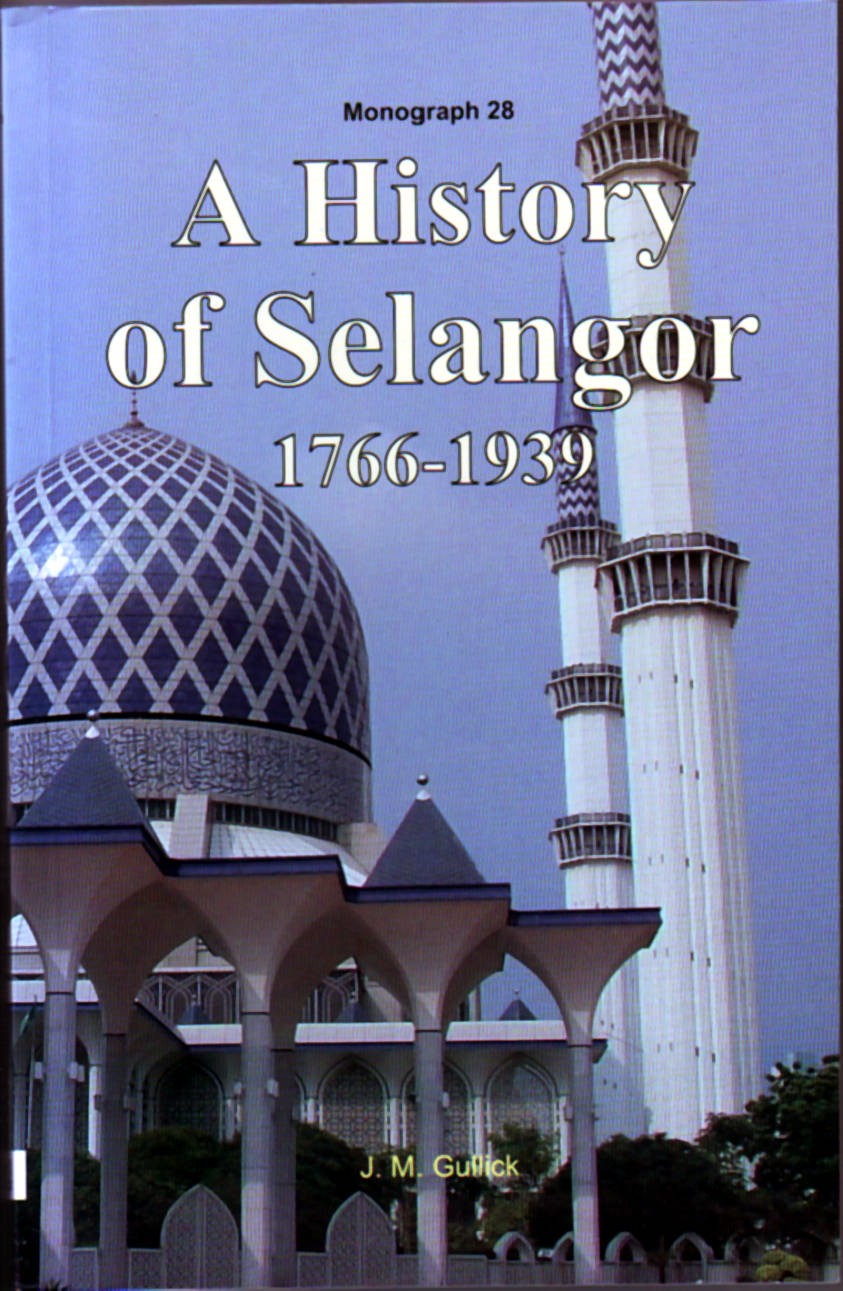 |
Monograph 28
A History of Selangor 1766-1939
By J.M. Gullick
291pp. Size: 140x220mm. Softcover
2004
John Gullick in yet another important new work A History of Selangor (1766-1939) builds on his previous research and writing on the west coast Peninsula's
Malay states of Kedah, Perak, Selangor and Negri Sembilan but now focuses solely on the modern history of the kingdom of Selangor. From the establishment of the
Bugis-led dynasty founded by Raja Lumu when he was installed as sultan in 1766 through the dramatic colonial impact of the 19th century, and up to the eve of the Pacific
War in the 20th century, Selangor acquired unparallelled importance as the economic powerhouse of British Malaya, a position which rapidly led to the state
becoming the centre of European control not only throughout the Federated Malay States but indeed throughout Malaya itself.
Gullick's examination of the indigenous dynamics in response to these changes is a much-needed and welcome complement to the purely political
accounts of the same period to be found mainly in the official files of the British administration. At the dawn of the 21st century, with almost 60 years of indepedent
existence as a sovereign nation, Malaysia's development is inextricably intertwined with that of Selangor which contains within it the Federal Territory of Kuala
Lumpur. For a greater understanding of the earlier processes which led to this extraordinary outcome, historians for generations to come will be indebted to Gullick
for his thorough research and unique interpretation of Selangor history. Originally published in 1998, a second edition was brought out after the book was revised and updated by the author in 2004.
"A History of Selangor is the latest in a long line of state histories to be published by the MBRAS and sponsored by Malay royalty. Within such a context it harks back
to the colonial-era work of Richard Winstedt, R.J. Wilkinson and M. Sheppard, and deserves a prominent position next to the works of these pioneers
of Malaysian historical-writing."
Timothy Barnard, Journal of the Humanities and Social Sciences of Southeast Asia, KITLV, Vol. 159 Issue 1, Jan. 2003
About the Author:
John Michael Gullick was born in February 1916 into an affluent Bristol family whose circumstances were altered later by the slump in 1932. Having won a free place at
Taunton, a boarding school in Somerset, Gullick's scholarly inclinations became distinctly apparent when he was awarded an open scholarship to Christ's College, Cambridge from which he emerged in 1938 with a
Double First in Classics. Gullick joined the Colonial Administrative Service in 1939 and after the war - in which he served with some distinction - found himself transferred
to the Malayan Civil Service in which he would serve for the next decade or so of his long and eventful life. Gullick joined the MBRAS in 1947 and sat on its Council in the 1950s before finally becoming
one of its International Advisory Board members and the Society's representative in the United Kingdom. After his retirement from the Malayan Civil Service in 1956, Gullick's career path took an unusual turn
when he became a company secretary after which, in 1963, he went into legal practice (he had qualified as barrister in the 1950s but opted for solicitor work), unorthodox
career moves that left an unmistakable quality on his writings and burnished his subsequent credentials as a formidable authority on Malayan history. Works written by Gullick subsequent to this period have been unrivalled by even professional historians, and he woved a dazzling tapestry of brilliant scholarship and thorough research that became the envy of many professionals in the field. As the author of numerous articles and books on the modern history of Malaya, Gullick's contributions to its scholarship were widely acknowledged but he remained
in private life a modest and self-effacing man.
The last in a long and illustrious line of scholar administrators who had inestimably enriched the field of Malaysian history, Gullick died at his home in Essex in April 2012.
Contents:
Maps and Tables
Abbreviations
Preface
Chapter
- A Dynasty is established
- Selangor under Sultan Ibrahim (1782-1826)
- Tin Mines and Power Struggles
- Civil War and British Intervention
- Selangor after the War
- A Modern Structure
- The Development of Agriculture
- State Capital
- A troubled Dynasty
- Into the Twentieth Century
- An Epilogue - Selangor 1918-1939
Appendices
- Rulers and Residents of Selangor
- The government of Selangor in the 19th century
- Malay vernacular and Islamic Education
Glossary
Sources and Bibliography
Index
 |